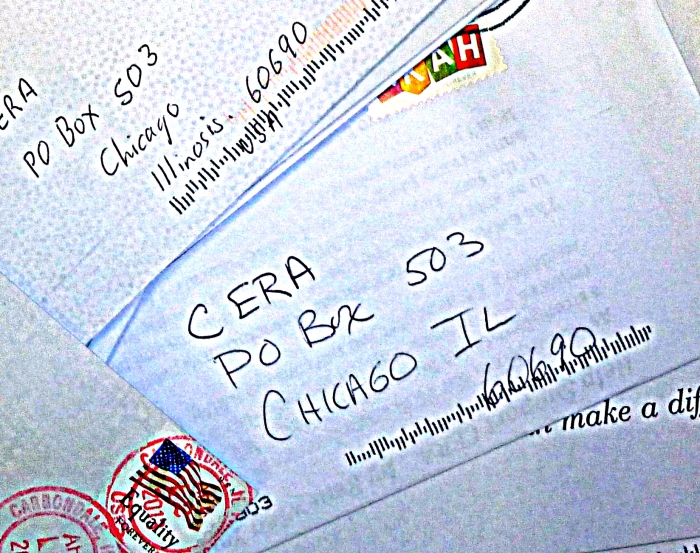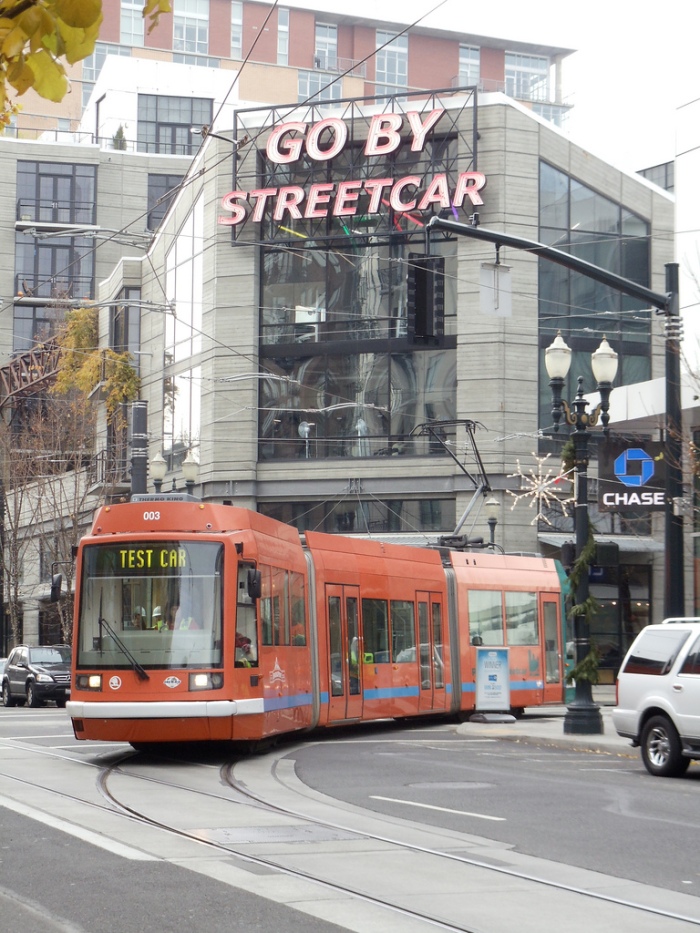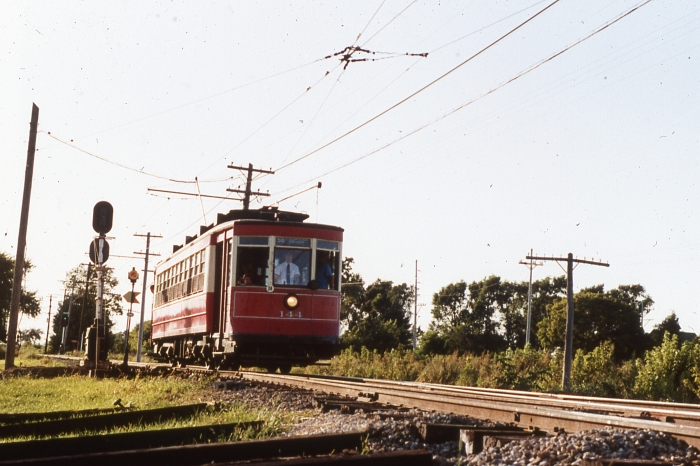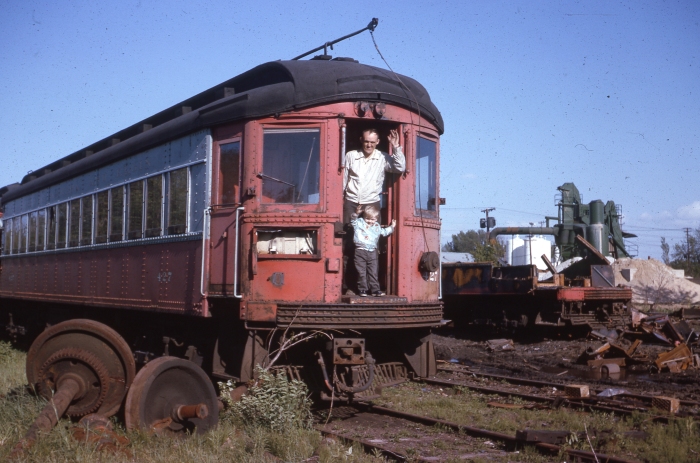
Letters, questions, comments, odds and ends and other news from the CERA home front:
Jerry Hund writes:
I have really enjoyed reading your blogs related to the CERA. Keep up the great work.
Next, I remember reading an article several years ago about an abandoned rail line that traveled from Union Station/Northwestern station to Navy Pier (in Chicago). The tracks are mostly gone now, but it did mention how it served as a freight line serving various buildings over the years. It traveled along the river. Do you know what I am talking about? If so, could you write about this?
I see it as a great light rail line to connect the two train stations with Navy Pier and a great tourist line.
There was until recent years a Union Pacific freight line that ran along Carroll Avenue between the Chicago River and Navy Pier, going as far as the Jardine Water Purification Plant at 1000 East Ohio Street. This spur line crossed the river on a bridge which is still in place, but is now kept in the “up” position.
I recently took a picture of the right-of-way at LaSalle street and the tracks are gone now. Years ago, I recall seeing some private varnish down there. Some rich person’s private car was temporarily stored there during a trip to Chicago.
All this was on a lower level than most of the streets in the area, since the street grid was raised above ground level a long time ago. Carroll Avenue runs at the actual ground level. In some cases, the freight spur ran right through buildings such as the Merchandise Mart.
Until fairly recently, the branch was kept in place for newsprint deliveries to the Sun-Times. You would think the Tribune also used it before Freedom Center opened in the 1980s, but you would be wrong. Tribune Tower took all newsprint deliveries by water from their own dock. The Tribune Company produced their newsprint in Canada and had it shipped via the Great Lakes.
The Sun-Times was the line’s last customer, and when that building was torn down and replaced by Trump Tower, it was abandoned and tracks were removed.
Apparently, C&NW ran a short-lived RDC commuter shuttle along this line in the mid-1950s, but it didn’t last long enough to build up traffic. Another problem was the need for five employees to work a three-car train. After the shuttle quit, the Wendella commuter boat operation began in 1962 along the Chicago River, and continues to this day.
There were plans in the 1980s for a light rail line connecting Union Station, Northwestern Station (now theOgilvie Transportation Center) and North Michigan Avenue, and in fact I wrote an op-ed piece in one of the Chicago dailies promoting it. The idea got pretty far along before it was killed. More recently, the City has planned for much the same thing but with a dedicated busway instead of rail.

Carroll Ave. freight right-of-way at LaSalle St. in March 2013. (Photo by David Sadowski)
There may eventually be a “heritage” streetcar of light rail line in Chicago, as there are already in several US cities. As I have said before, the word “streetcar” is gradually creeping back into the urban American lexicon.
In the 1970s and 1980s, “light rail” became a popular concept, introduced as something new and distinct from streetcars, which were still considered somewhat obsolete by urban planners. However, more and more cities are now embracing the streetcar as a concept distinct from light rail. Witness Portland, Oregon which has both light rail lines and streetcar lines, distinct from each other.
Now, streetcars are considered a lower-cost alternative to light rail, and have lighter-weight cars, track, and overhead, as well as more street running.

1st Loop Test Train – Go By Streetcar – Portland OR 12-14-2011 (Photo courtesy of Portland Streetcar, Inc.)
In response to our recent post The Preservation Movement in Early Days (April 5), Scott Greig writes:
Remarkably, there were a number of major fans from the early days who were against any efforts at preserving cars.
Without getting into personalities, it is worth noting that there was really very little interest in this country of preserving anything old before maybe the 1960s and 70s. Today, we think of Frank Lloyd Wright as a genius and many of his homes are practically like museums. But when he was building them, chances are he wasn’t thinking about posterity.
More likely, he thought the stuff he built would have perhaps a 30-year useful life and then get torn down and replaced by something else. After all, that’s what he did- his buildings and renovations replaced earlier stuff that had gone out of favor.
Wright went public in 1957 to try and save the Robie House from the wrecking ball, but prior to that, I am not aware that he made any complaints when many of his greatest works were demolished, such as the Larkin Company Administration Building in Buffalo, New York, which was leveled in 1950.
But I don’t know that FLW was really much of a preservationist, considering his renovations to the Rookerybuilding in Chicago, or the sort of changes he made to the Isabel Roberts House in River Forest, Illinois. Given the choice between preserving the house, which he might have had a sentimental attachment to, Wright chose to remodel it into practically a brand new building.
Today, many Louis Sullivan buildings are considered landmarks. In the 50s and 60s, all this great stuff was getting torn down, and they weren’t saving anything, not even the fabulous decorations. The early preservationist Richard Nickel was like a lone figure in the wilderness trying to save some of this stuff, documenting it in pictures and actually climbing into buildings that were being torn down to salvage certain pieces.
Nickel was killed in 1972 when part of the old Stock Exchange building collapsed on him. I don’t know whether Richard Nickel was a railfan, but I do think there were many others like him who had a similar attitude about saving the rapidly disappearing streetcars and interurbans in the 1950s.
So, in our culture, there wasn’t much interest in saving anything old, whether it was buildings or streetcars. I can see why someone would have thought it best to simply record these things in photographs. After all, even if you preserve a streetcar or interurban, it’s no longer in its original context.
That’s been part of the challenge in the preservation movement- to provide a useful and meaningful context to display and operate old equipment. Some museums have been better at this than others. For example, when you ride Chicago Pullman streetcar 144 today at the Illinois Railway Museum in Union, the experience and context is very much different from when this car ran in service in Chicago. Much of the trolley loop is on open track, which Chicago did not have a lot of, and not in city streets surrounded by houses and storefronts. There may eventually be such a “Yesterday’s Main Street” at Union, and at least they have the beginnings of one planned.
Likewise, it seems slightly disconcerting to see a 2000-series pair of Chicago “L” cars operating with a trolley pole, since these were the first series of cars on the system that never had overhead current collection. The same is true of the P&W “Bullet ” cars in museums. But it would be impractical from a safety standpoint to run a railway museum with third rail power, so what choice do they have?
But when the museum movement started, no railway museums like this existed- for some, it was simply enough to save a certain railcar, and maybe they would figure out what to do with it later.
As for providing a context, Henry Ford, whatever his other faults, was a pioneer with this in the 1930s, when he established Greenfield Village, today part of The Henry Ford Museum. Ford had historic buildings moved to his site and rebuilt with their contents. Henry Ford was a preservationist.
When some of the streetcar lines were abandoned, newspapers sometimes ran editorials that essentially said, Good Riddance. It was a disposable culture. Thankfully, since then, we have learned to keep at least some of the things worth saving.

CTA 2153-2154 at IRM on July 7, 2012, powered by trolley poles. (Photo by David Sadowski)

Chicago Red Pullman 144 running on open track at IRM in the mid-1980s. (Photo by David Sadowski)

It’s difficult, if not impossible, to reproduce an urban setting such as this in a railway museum. (Author’s collection)

CA&E 427, soon to be scrapped, in 1963 at Wheaton. (Author’s collection)

What was left of CA&E 405 in 1963 at Wheaton. (Author’s collection)

What was left of CA&E 405 in 1963 at Wheaton. (Author’s collection)
In other news, we congratulate longtime CERA member (and, former President and Director) Norman Carlson on his appointment to the Metra Board.
At the March CERA Board meeting, we accepted the resignation of Director and Secretary John M. Anderson. We thank him for his service and wish him well in future endeavors.
The Board then appointed longtime CERA member John Nicholson to fill out the remainder of Anderson’s term as Director and Secretary. John is well-known in the CERA community and has been active in our organization for a long time. You will find his name listed in some of our publications going back to the mid-1960s.
Finally, we lament the passing of longtime CERA member Robert (“Bob”) Selle. Bob joined CERA on November 15, 1948 as member #1335. To put this into perspective, this was 64 years ago, and less than two weeks after the Chicago Tribune ran the famous “Dewey Defeats Truman” headline. He will be remembered as an excellent photographer, and we have already used some of his photos in other blog posts. Bob Selle was also an early member of both the Illinois Railway Museum and the Electric Railway Historical Society.
We send our condolences out to Bob’s family on behalf of the entire CERA family. He will be sorely missed, but his good works survive him. You can read more about Bob Selle here.
Keep those e-mails, cards, and letters coming in, either to cerablog1@gmail.com or CERA, PO Box 503, Chicago IL 60690.
-David Sadowski
